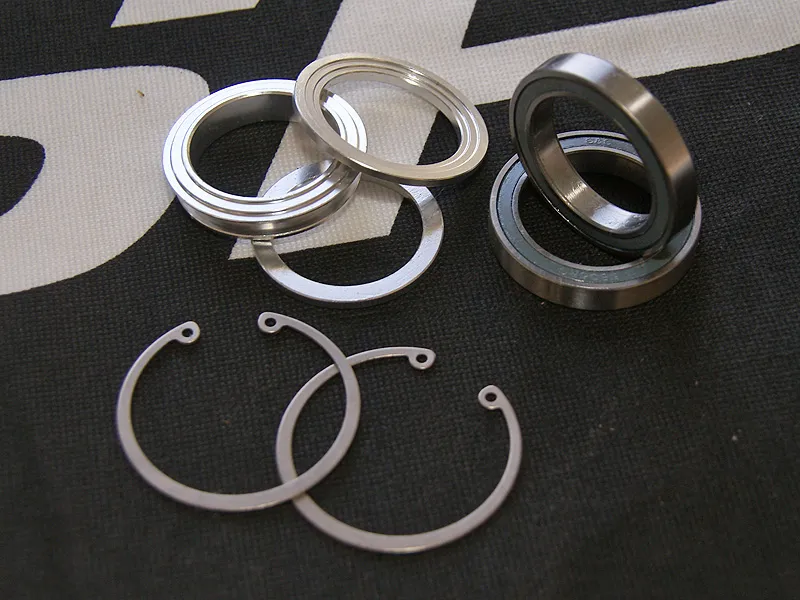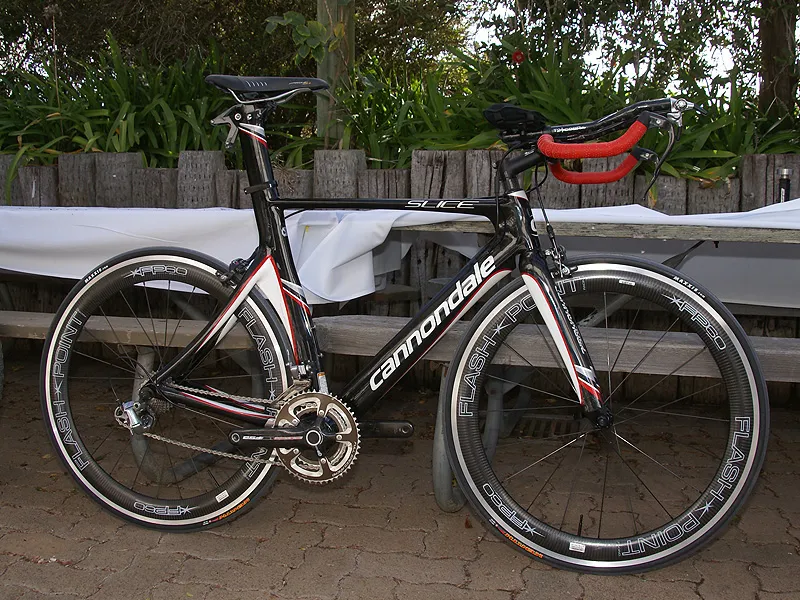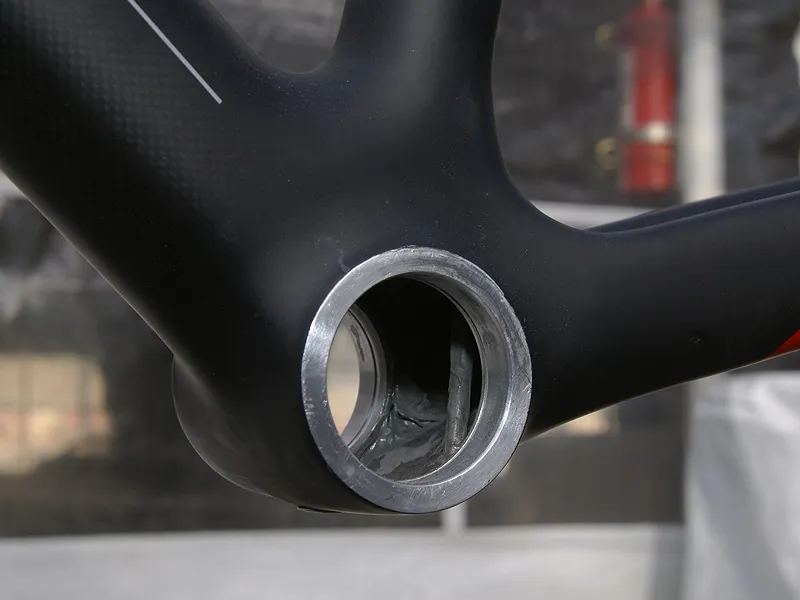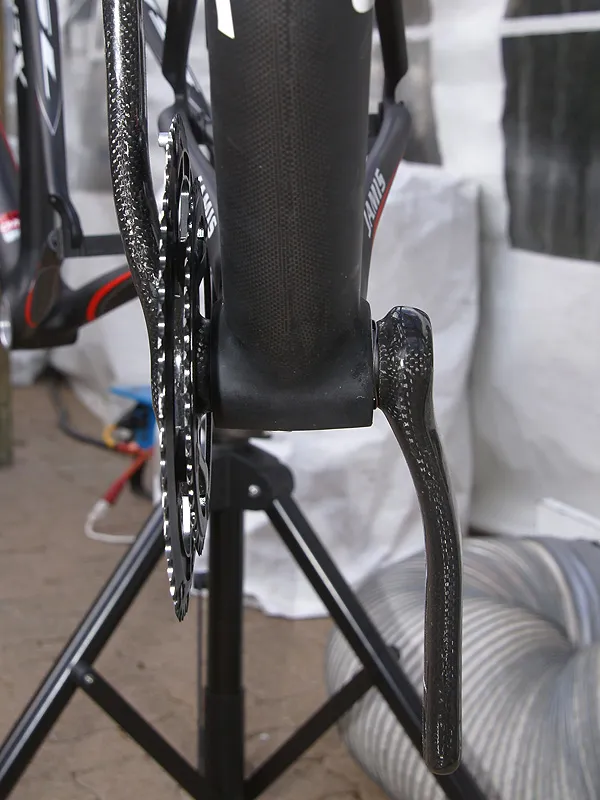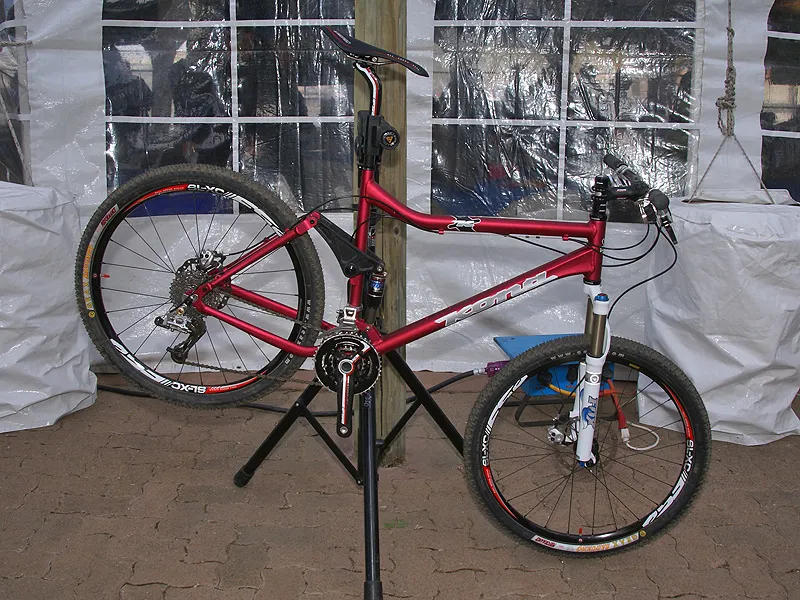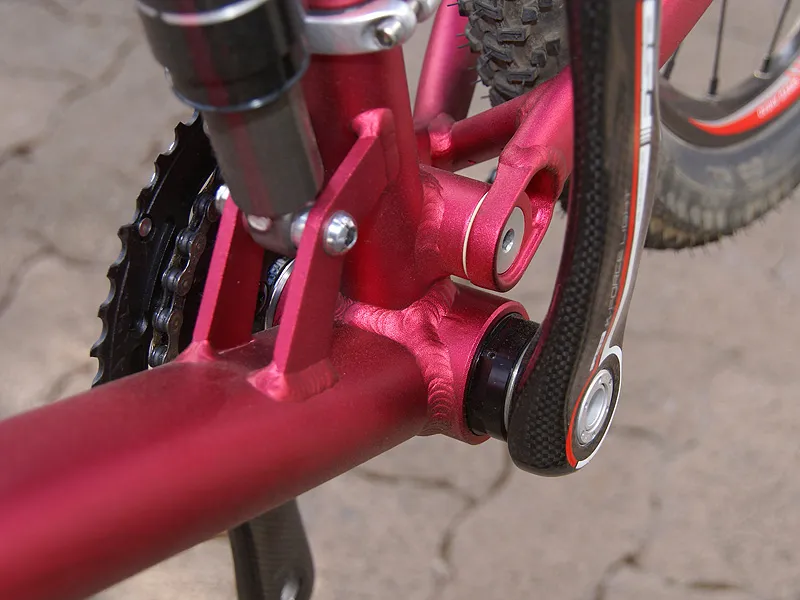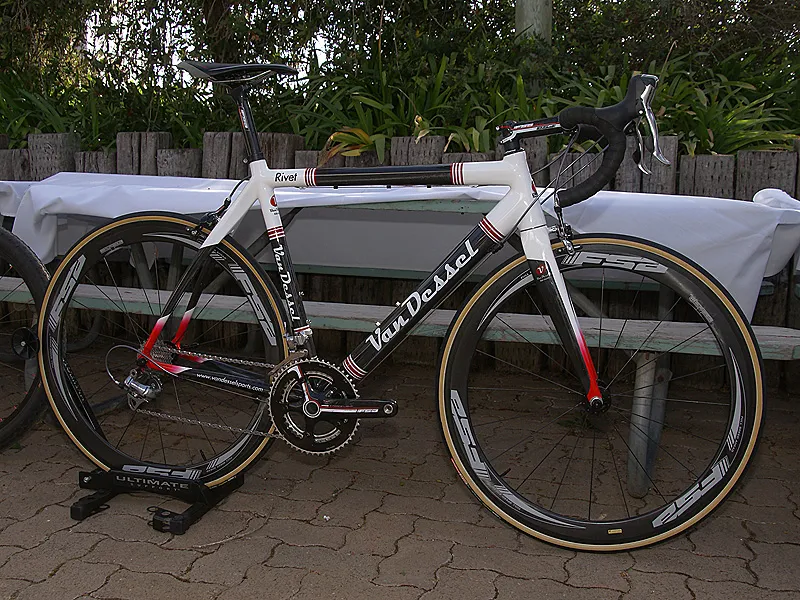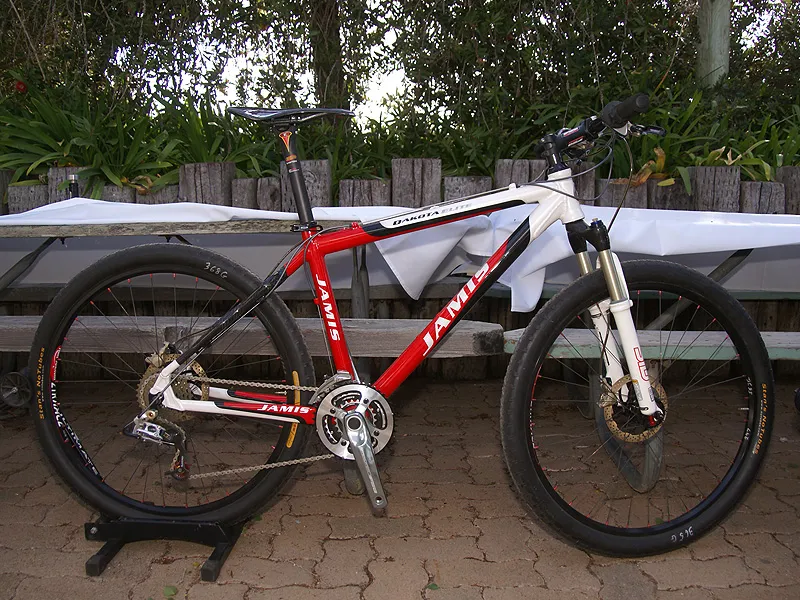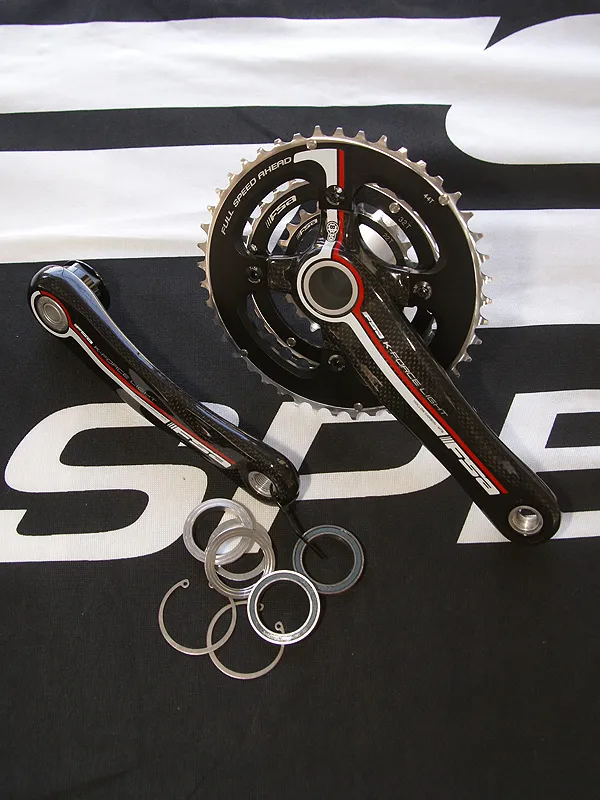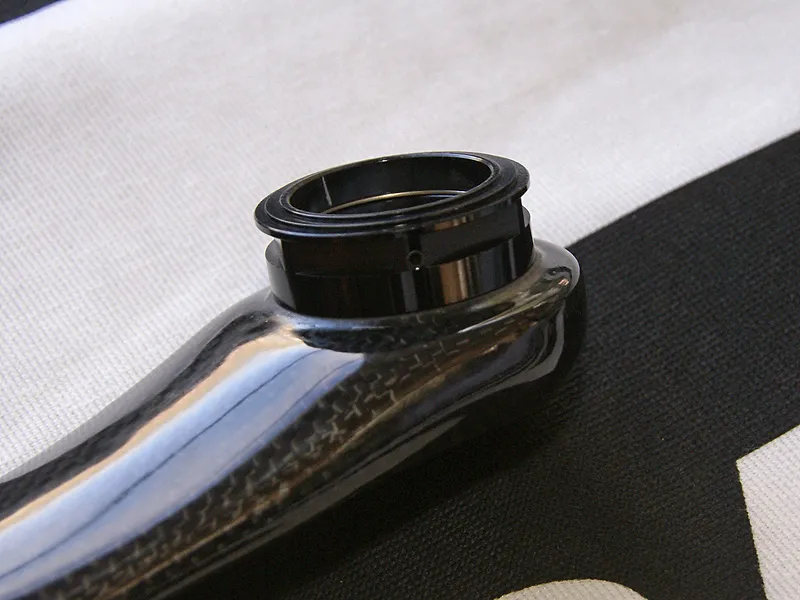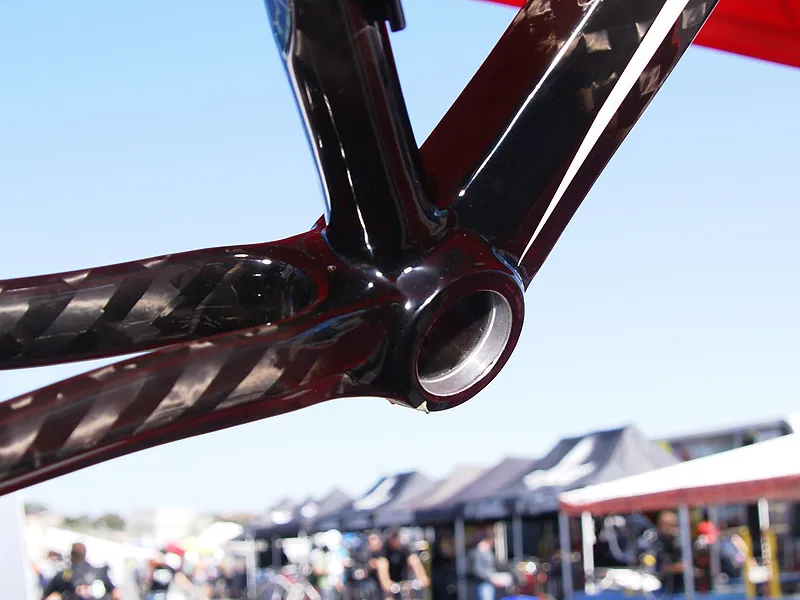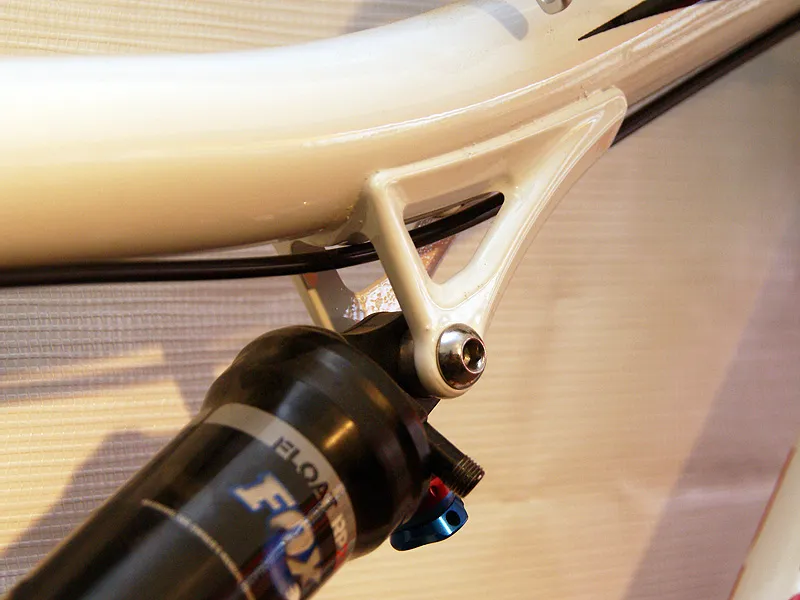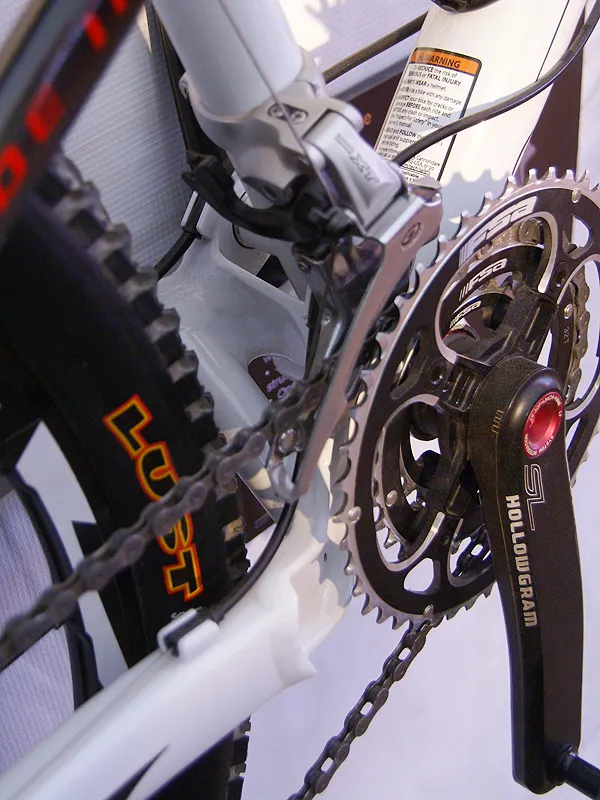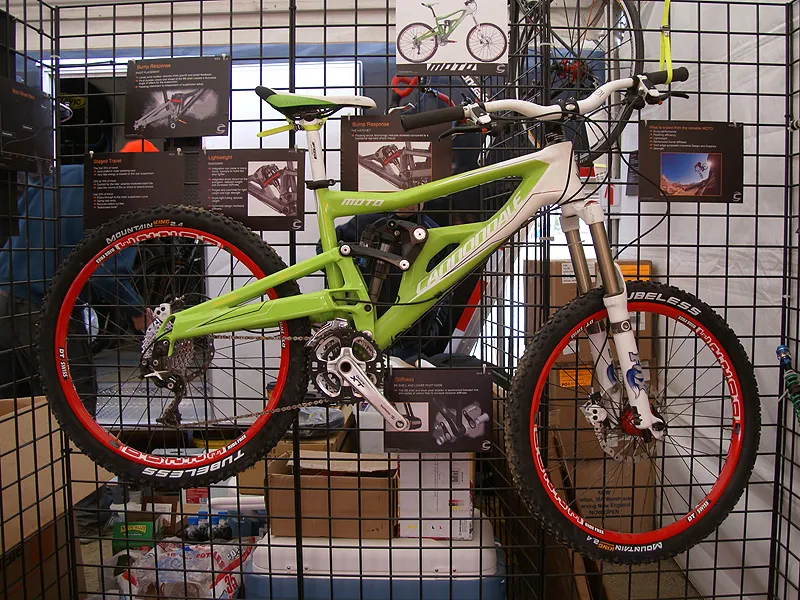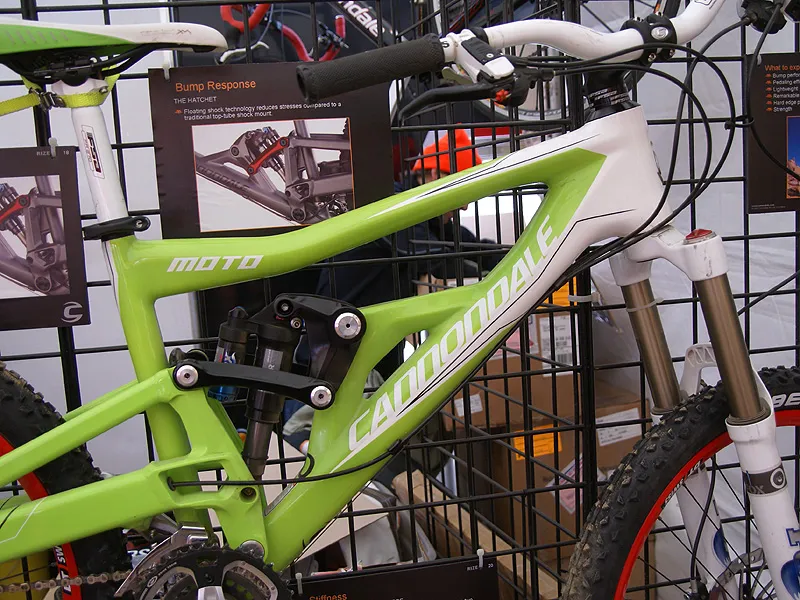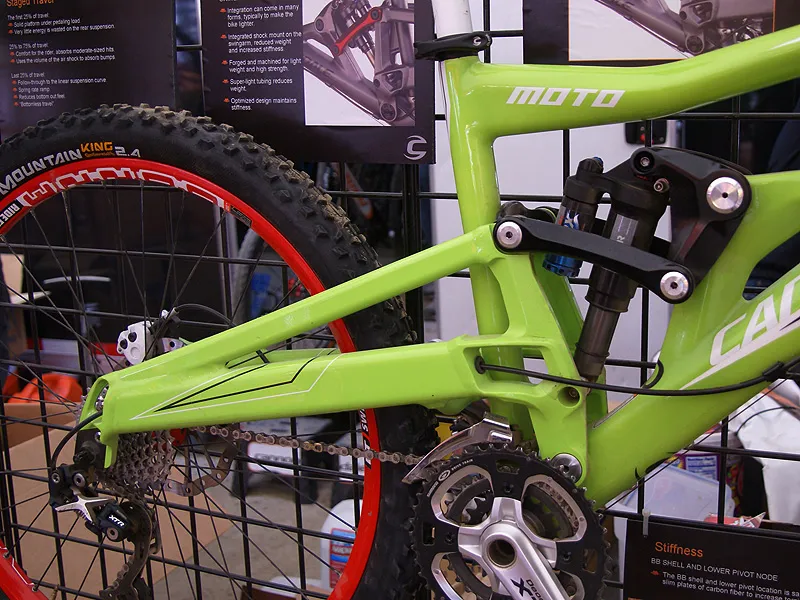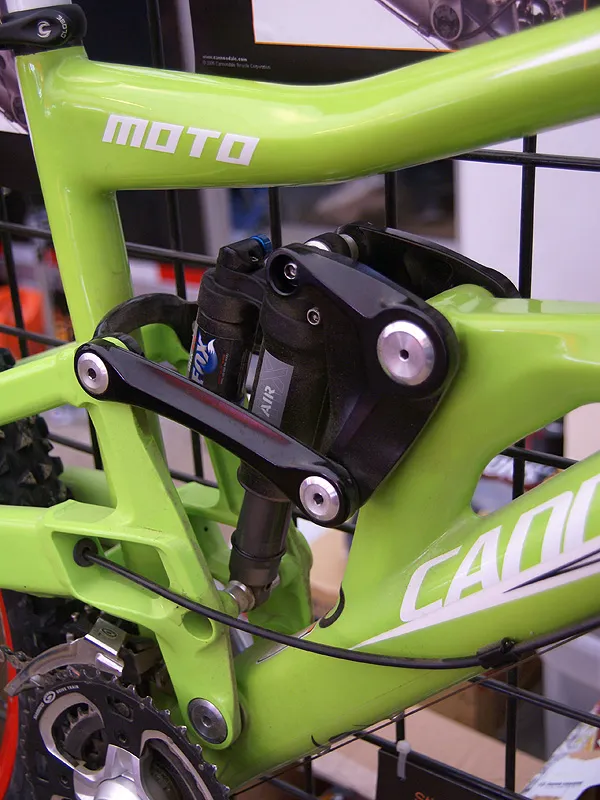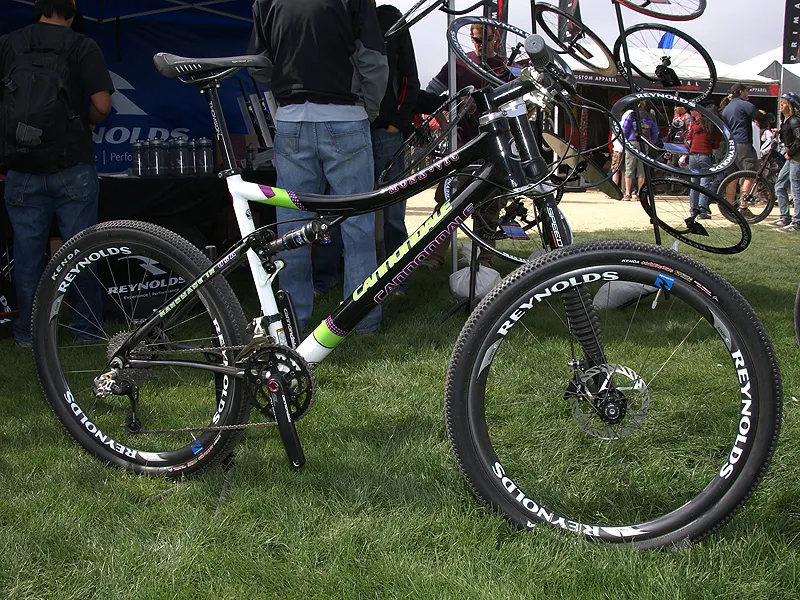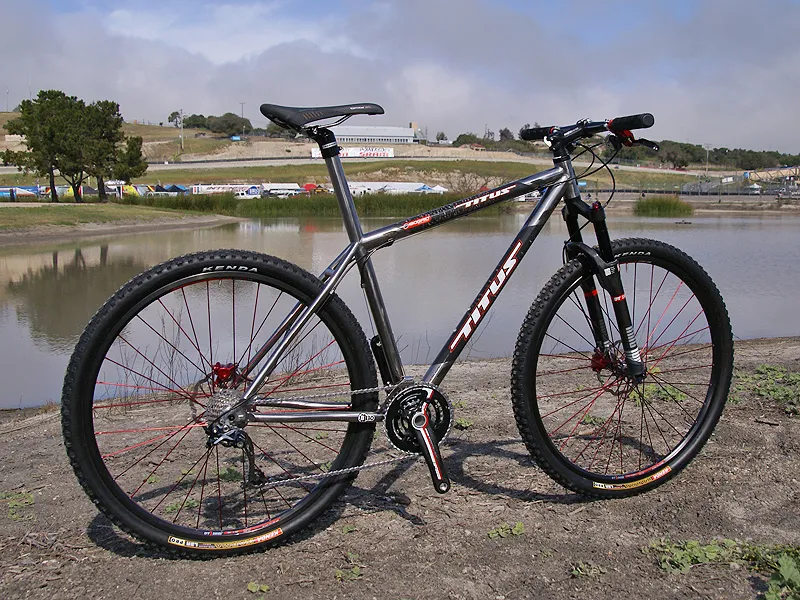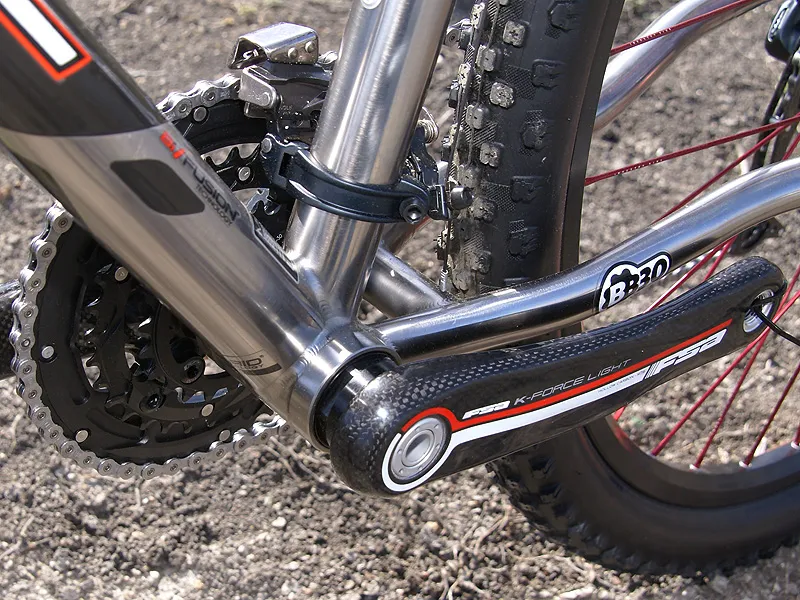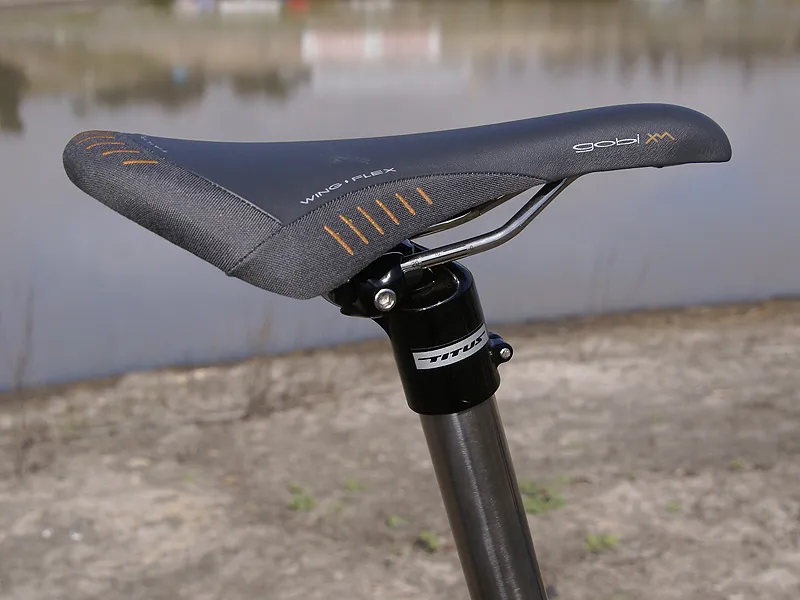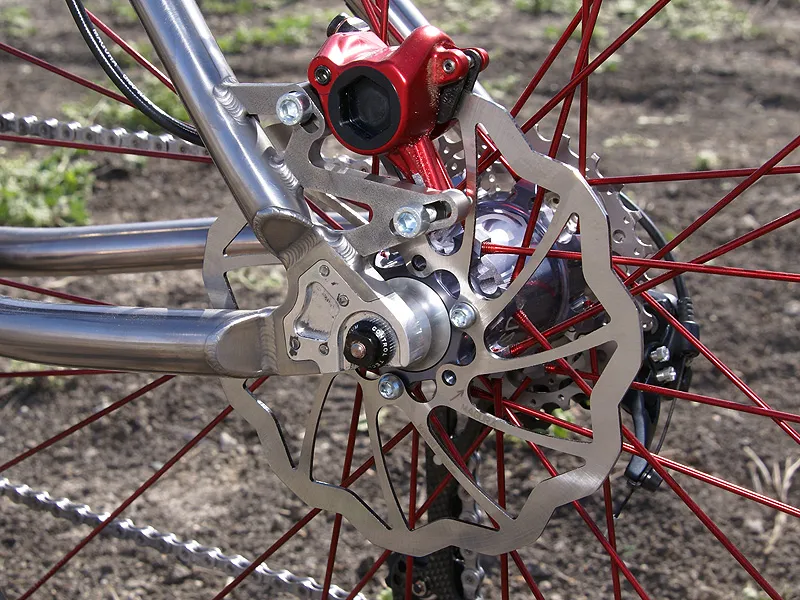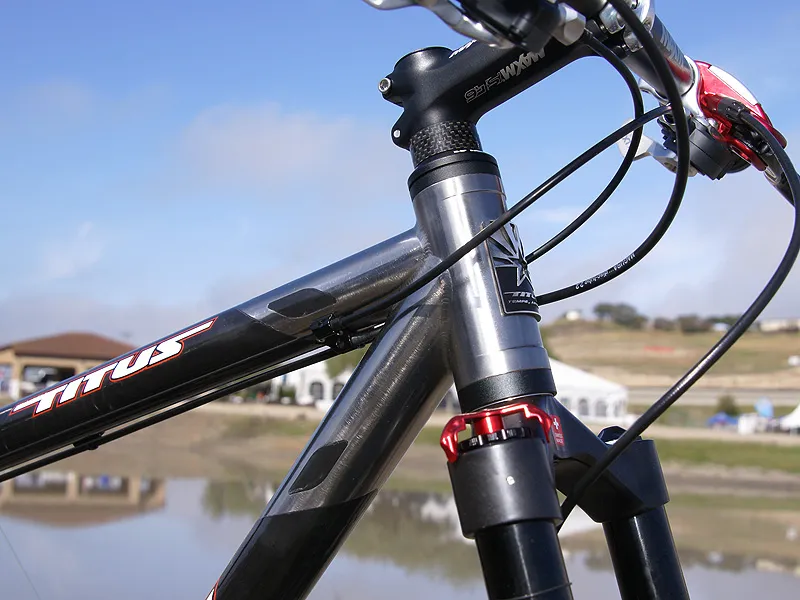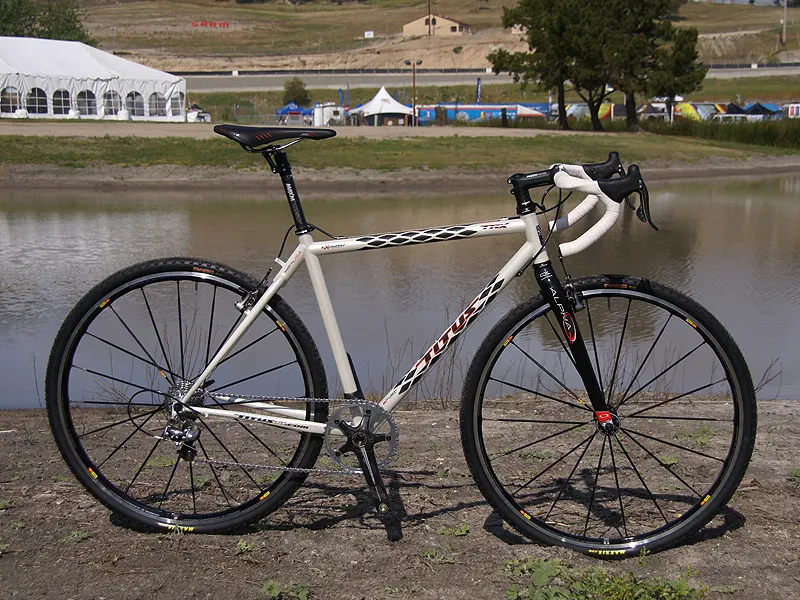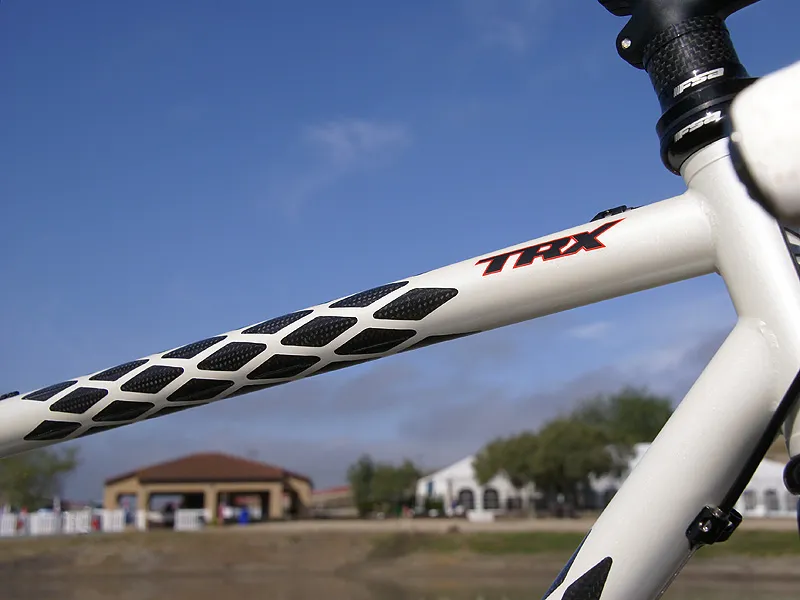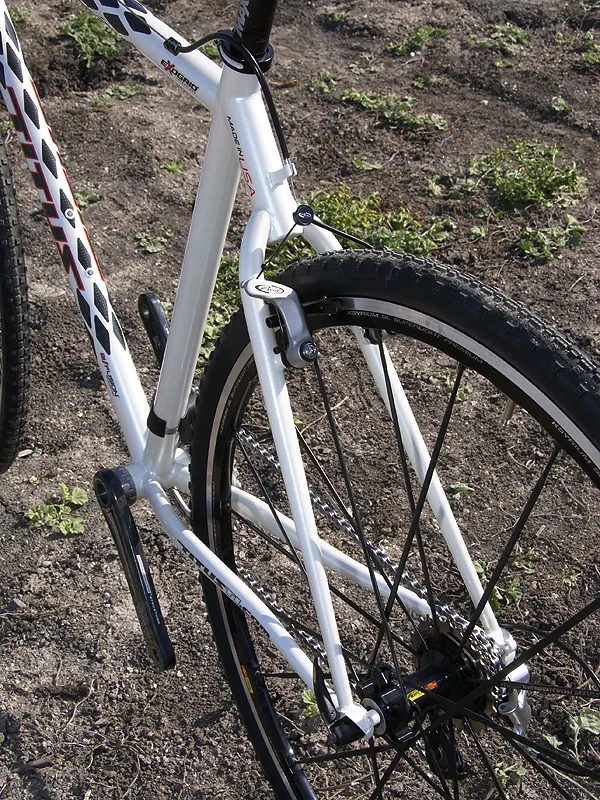The BB30 integrated bottom bracket standard will see far wider use in 2009, if the range of bikes using the oversized, press-fit bearing design at Sea Otter is any indication.
At a BB30 presentation, manufacturers such as Cannondale, Kona, Jamis, Titus and Caribou all showed off BB30-compatible bikes while event host FSA displayed no fewer than seven cranksets covering a wide range of uses.
SRAM unveiled a BB30-compatible version of its Red crankset at Sea Otter while Zipp has already been selling its premium Vuma Quad crankset in a BB30 version for several months now. Moreover, Specialized frames equipped with its house brand integrated cranks are also apparently BB30-ready even though the company doesn't officially say so.
Cannondale was accused of needlessly stirring the industry pot when it introduced the BB30 standard years ago. However, much like Manitou and its 74mm post mount brake tabs, Cannondale can now proudly say ‘I told you so’ as the now-open standard spreads through the industry.
From a strictly engineering standpoint, BB30 is an easy sell. All other things being equal, it’s lighter and stiffer than current external-type bottom bracket systems. It also reduces pedal stance width and increases bearing life thanks to the narrower, but larger diameter, bottom bracket shell.
Component maker FSA says that the most dramatic weight savings probably won’t come at the high end. By its own calculations, the BB30 version of its SL-K Light crankset sheds just 24g. The biggest benefits will likely be found at the mid-range. For example, FSA’s standard Gossamer crankset weighs 936g complete but the BB30 version is just 830g.
The new standard will create some compatibility headaches but a number of companies apparently feel the advantages are too great to ignore. Some of the growing pains may be ameliorated by adapters that allow a BB30 shell to be fitted with a threaded bottom bracket.
Cannondale Rize and Moto models showcase integration
Cannondale, the originator of the BB30 standard, showed off its new Rize trail bike platform that highlighted the effectiveness of its integrated approach to bicycle design. The Rize is claimed to weigh as little as 10.7kg (23.5lb), roughly the same as many high-end full-suspension race bikes, but offers 130mm of travel at either end while supposedly still delivering top-end bump performance and chassis rigidity.
Much of the credit for the feathery weight of the top-end Rize 1 assuredly belongs to the carbon-and-aluminum frame and premium spec but a pair of proprietary parts also helps. The new Lefty Max Carbon PBR fork is among the stiffest front suspension platforms we’ve used but Cannondale says it weighs just 1.3kg (2.9lb), thanks in part to the integrated stem and steerer tube. The BB30-standard Hollowgram crank continues the ‘light but stiff’ theme with its directly pressed-in bearings and 30mm-diameter aluminum spindle.
In Cannondale’s case, the integrated approach is anything but new but the company has proven that sticking to its once-unorthodox design principles works well.
While not necessarily rife with integrated systems, Cannondale’s new Moto looks to be an impressive bit of kit nonetheless as it offers 160mm of travel front and rear in a no-compromise package claimed to weigh under 13.6kg (30.0lb).
The top-end Moto 1’s shock linkage is cleverly designed so that its carbon front triangle is always under tensile, rather than compressive, load and the stout single pivot rear end is bridged at no fewer than four locations for good torsional rigidity.
Titus explores the BB30 possibilities
Arizona-based builder Titus showed off its own BB30-equipped hardtail and it was quite the stunner. The unnamed prototype was essentially an off-road version of its Ligero road machine, complete with an Isogrid co-molded carbon fiber-and-titanium top tube and down tube as well as an integrated seat mast capped with a Ritchey head. Convertible rear dropouts also allow for either geared or singlespeed use. Claimed frame weight is just 1.54kg (3.4lb) with an uncut mast.
Why bother with such an extravagant hardtail, though, when full-suspension seems like the default choice these days? According to PR man Jeff Titone, Titus’ hardtail sales have soared 50 percent last year as more and more riders re-embrace the performance appeal of their lighter weight and increased responsiveness.
If the new frame also delivers on its promise of offering similar ride characteristics to the Ligero, easily one of the sweetest riding road frames we’ve handled in recent memory, sign us up.
Titone said the new frame was in the experimental phase for now as it still had to undergo testing. Assuming everything goes well in that department, it’s entirely possible that we’ll see it in the 2009 lineup along with a BB30 option for other models.
Projected cost on the prototype hardtail hasn’t been set yet, but Titone said it’d likely be “no less than US$3500”. Better start saving now.

